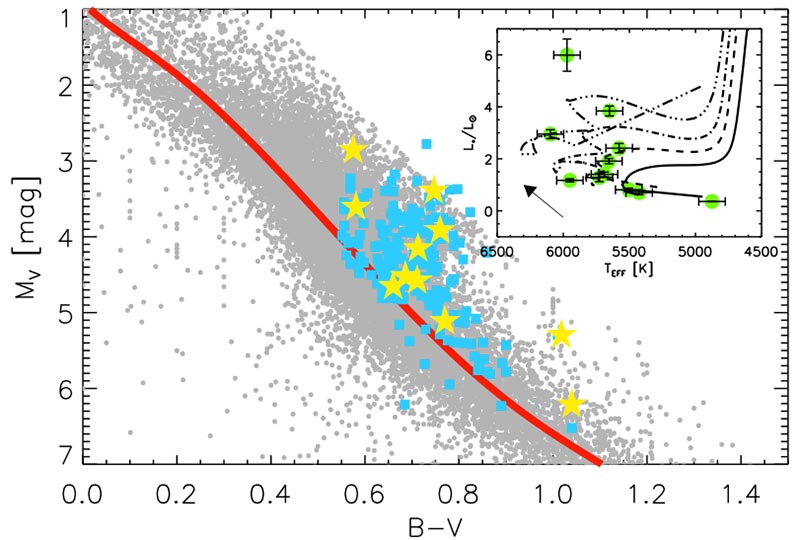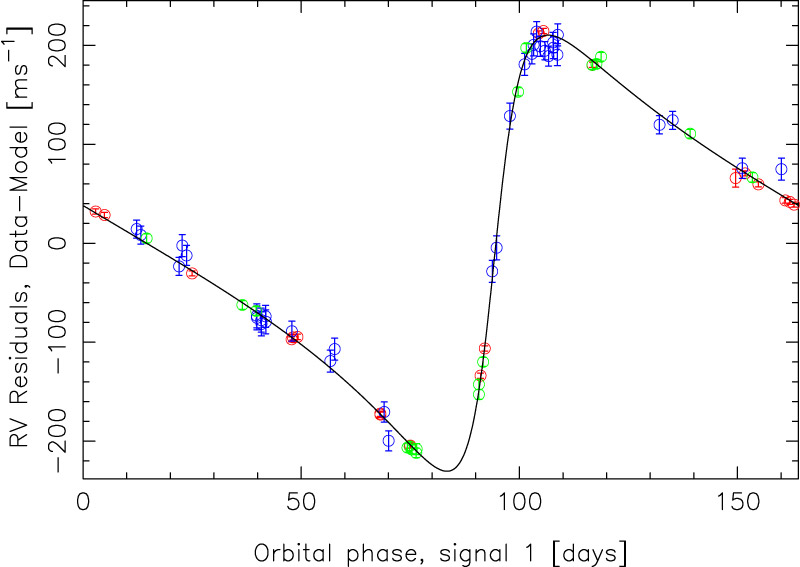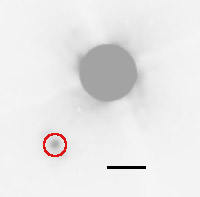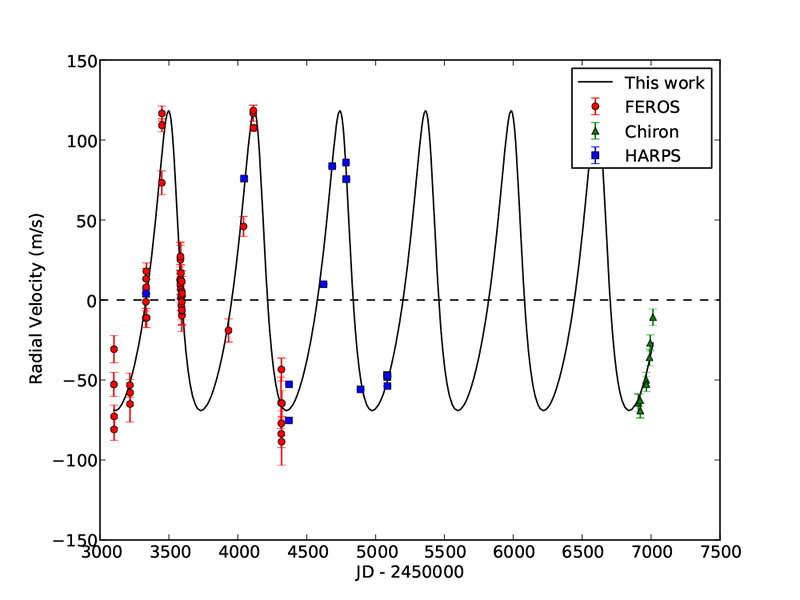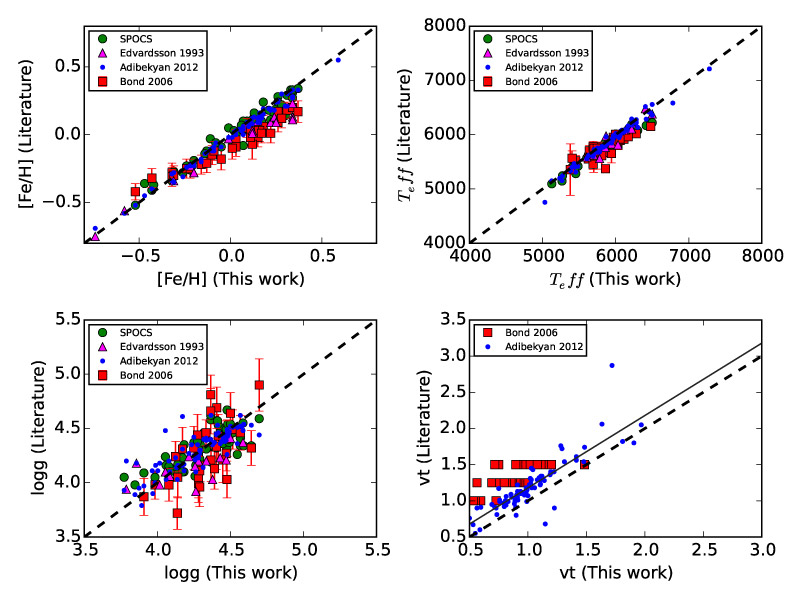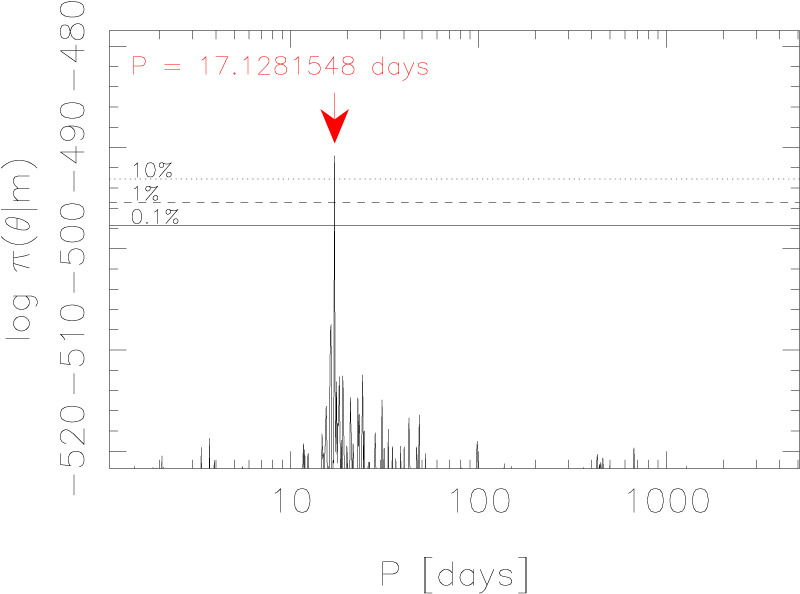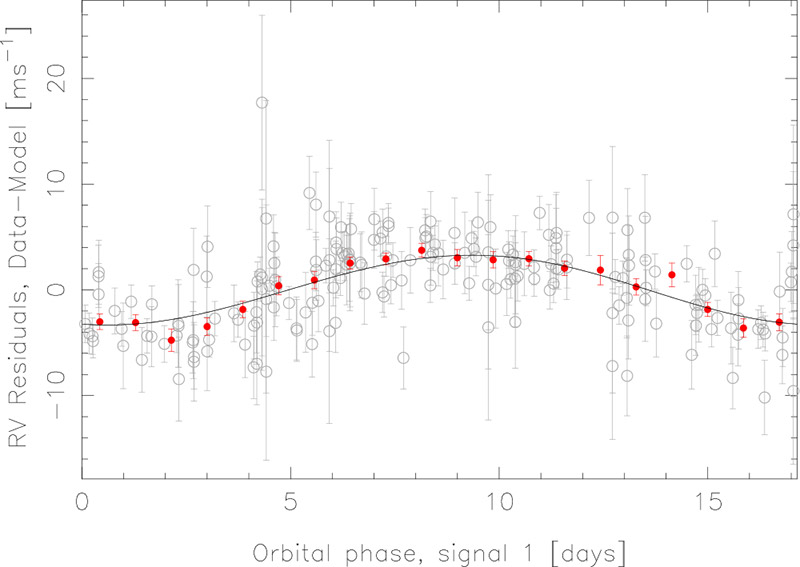Research
The Calan-Hertfordshire Extrasolar Planet Search
James Jenkins
Within the New Worlds Lab we conduct a number of small and large surveys for planets, in particular we have been running the Calan-Hertfordshire Extrasolar Planet Search (CHEPS) since 2007. CHEPS is a survey focusing on the detection of planets orbiting the most metal-rich stars in the galaxy. Metal-rich stars are those with the most metals like iron in their atmospheres. The significance of metals when it comes to planet search is that it has been well established that metal-rich stars host a higher fraction of gas giant, or Jupiter-like, planets orbiting near to the star. More recently, the CHEPS project has shown that the opposite might be the case for the lowest mass planets, the so called super-Earth planets, those planets with masses a few times that of the Earth.
The CHEPS project uses the radial velocity method to detect planets, and the radial velocity method is an indirect method that works by breaking the star’s light into its constituent colours, or its spectrum, then using any dark bands in the light coming from atoms in the star’s atmosphere that is blocking some of the light (absorption lines) to measure a velocity of the star as it moves towards us and away from us. This velocity is given by the motion of the star that is induced by the gravitational interaction between the star and any orbiting companions. You may think this velocity must be small for small planets, since the stars are so much more massive, and that is indeed the case. However, instruments like HARPS that are located at the European Southern Observatory’s la Silla Observatory in Northern Chile, can measure the velocity of stars to a precision better than 1 meter-per-second!!
Thus far, as part of the CHEPS, we have discovered brown dwarfs orbiting in the so called ‘brown dwarf desert’, over 10 new planetary systems consisting mainly of gas giant planets, multiple planet systems, and a low mass system that hosts a hot Uranus-mass planet, which is also likely the most metal-rich star ever known to host a planet. Furthermore, and somewhat more importantly, we have shown that there appears to be a lack of planets with masses less than that of Neptune (17 Earth-masses) orbiting those metal-rich stars, which indicates that these stars likely form large planets quickly, not leaving behind many small planets.
High Contrast Imaging of Long Period RV Trends from the CHEPS and EXPRESS Surveys
Blake Pantoja
While most of the group does research on the radial velocity method of detecting extrasolar planets, we also do research in looking for low-mass stars, brown dwarfs, and planets using the direct imaging method. Whereas radial velocities measure the changing velocity of a star due to the gravitational interaction by an orbiting companion to find planets, direct imaging takes pictures of stars to try to *see* any orbiting companion. While this might seem easier to do, it is actually very difficult as a star could be about one-billion times more bright than the planet. This would be equivalent to trying to find a firefly near a lighthouse, many kilometers away! Luckily we have some ways to find orbiting companions using adaptive optics (AO), where the AO system is able to correct for turbulence in the Earth’s atmosphere (allowing us to see the region very close to the star), along with coronographs that vastly decrease the star’s light by blocking it out. We use instruments such as SPHERE at the Very Large Telescope and Magellan Adaptive Optics at Las Campanas Observatory, both of which use various methods to allow us to find faint objects close to their stars.
At the current time, most of the planets being discovered with this method are very young and hot. The Sun, for example, is an old star, about 4.5 billion years old, and therefore its retinue of planets are also very old and hence very faint. While we will be able to observe planets like Jupiter around nearby old Sun-like stars when the European Extremely Large Telescope (with its giant 40 meter mirror) comes online in 2024, for the present time, we can search for low-mass stars and brown dwarfs orbiting a Sun-like or less massive star. This allows us to map out an orbit of the object over time, giving us a direct measurement of the companions mass using Kepler’s third law. With this mass measurement, we can better understand the physical processes that are happening in the least-massive stars by comparing them to what we would get from computational models using physical theories, as well as the known relationship between a star’s mass and its brightness. You can see one of these low-mass stars in a SPHERE image we obtained here (circled in red), which is about 60 times fainter than, and 4 billion kilometers away from, its host Sun-like star.
Example high resolution and high contrast adaptive optics image of one of our stars where we have detected a comoving companion, shown within the red circle. The companion is around 40 times fainter than the host star, which is found behind the large blocking circular mask above the detected companion.
The RAFT Survey
Maritza Soto
The Re-analysis of Archival FEROS specTra (RAFT) project focuses on the detection of planetary systems using the radial velocity technique applied to spectra that was previously observed with the FEROS instrument, but using our new analysis program. The stars we focus on as part of this project are mainly sub-giant and giant stars, which are stars generally much larger than our Sun, and further along their evolution, or closer to their death-beds.
As part of RAFT, we also work on the characterization of the stars we want to use to search for planets. This is very important because what we observe in the end are the stars themselves, not the planets directly, so we need to understand the type of star before we detect the planets. Therefore, within the New Worlds Lab, we are working on an automatic code that computes the temperature, metallicity (amount of metals in a star’s atmosphere), surface gravity, micro turbulence, mass, age, and abundance distribution of different elements. We plan on using this code to compare the characteristics of stars in different evolutionary states, and to understand the systematics produced by the different sources of data used by the astronomy community.
The Rocky Planet Search
Matias Diaz
This research is focused on the detection of small rocky exoplanets orbiting the nearest stars to the sun. The detection method we use is commonly referred as Doppler Spectroscopy. As mentioned above, this method consists of measuring the radial velocity of the star with respect to the Sun. If the star has a companion orbiting around it, we can detect how much it wobbles due to the influence of the companion.
We use very precise (~1 m/s) spectrographs installed in the telescopes located in Northern chile to hunt for these small planets such as the Carnegie Planet Finder Spectrograph (PFS) at the Magellan Telescope in LCO, HARPS at La Silla, and CHIRON at CTIO. We also use data from spectrographs located in the Northern hemisphere such as HiRes at Keck (Hawaii) and APF at Lick (California).
Once the radial velocities are computed, we use a statistical model to look for the signatures embedded in the data. The Bayesian approach we use performs Makov Chain Monte Carlo analysis (based on the Metropolis-Hastings algorithm) and this is used to estimate the most statistically significant set of orbital parameters that support the data (i.e. the best set of characteristics for a companion planets orbit around the star), taking into account the stellar activity. Stellar activity is important since it can introduce periodic signals that are not due to the presence of a planet orbiting the star. We use spectral lines such as the CaII H & K lines to monitor the chromospheric activity of the star. The main goal of this project is to constrain the frequency of low-mass rocky planets orbiting nearby stars.
